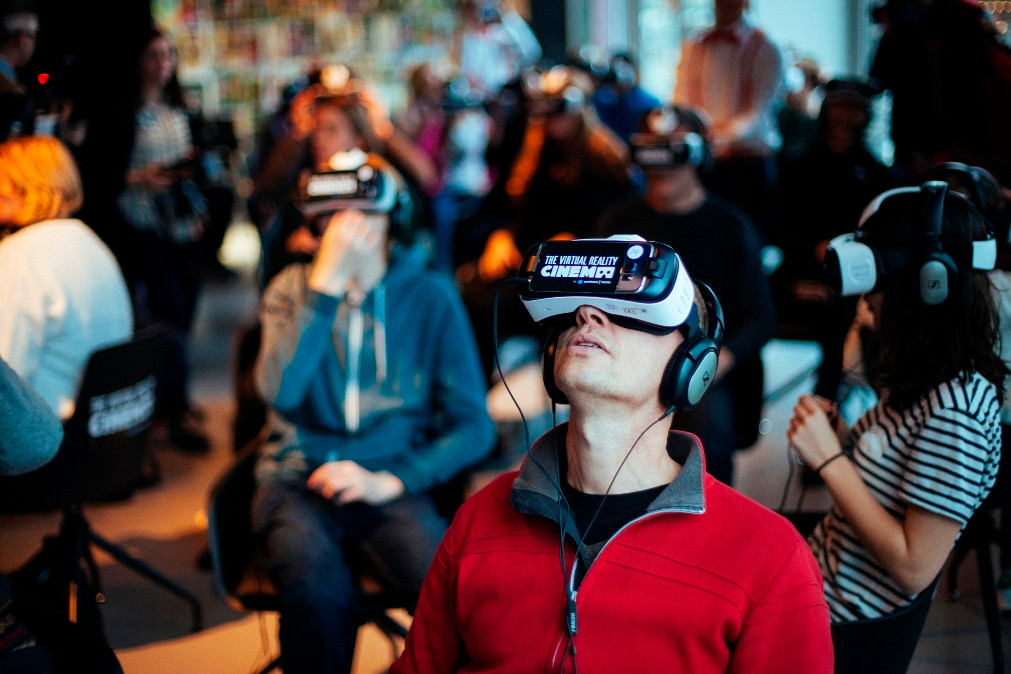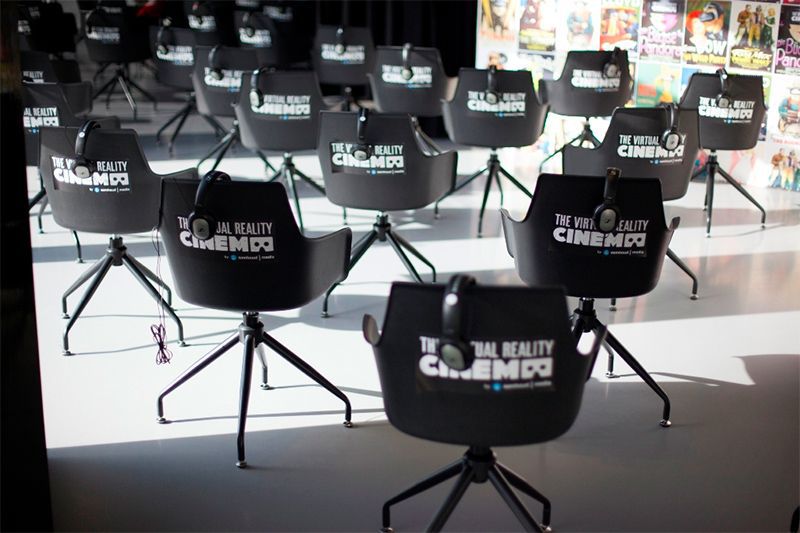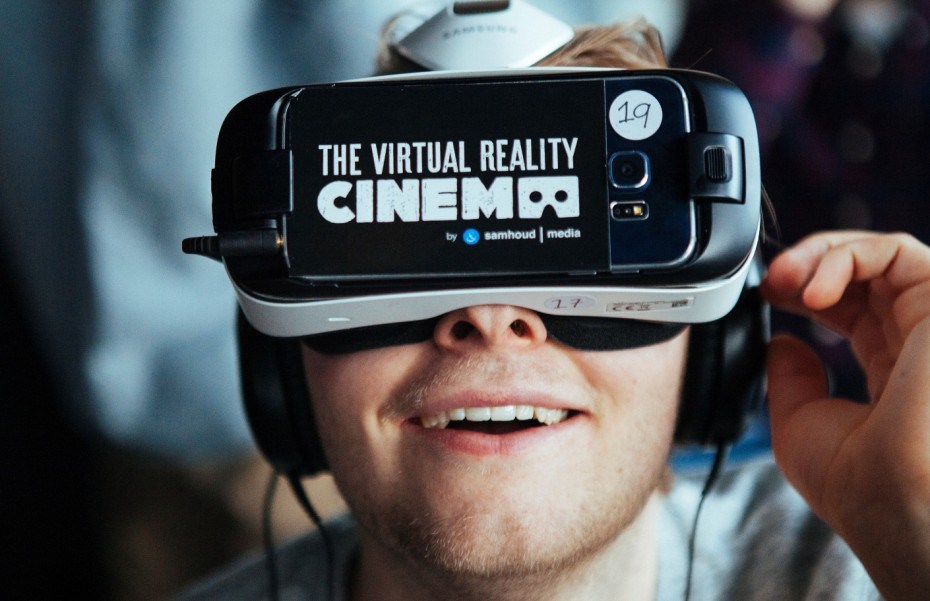Movies with 360 °, interactive, immersive … will virtual reality revolutionize the cinema one day? Let’s dream (or nightmares) a bit, and imagine five minutes what the seventh art might look like if it were “increased” by the VR ( virtual reality ) …

Just look at this excerpt from the Book of the Jungle in virtual reality to realize the immersive potential of VR cinema. Instead of a giant but flat screen, the VR allows us to dive into a movie, up to embody a character.
Specifically, VR cinema, filmed from 360 degree cameras, covers almost entirely the spectator’s field of vision (equipped with a helmet), and allows him to watch a scene from all angles, even behind him.
“Experience has nothing to do with cinema as we know it. Rumor has it that the spectators of 1896 frightened at the entrance of a train arrival to station in La Ciotat 1895, by Louis Lumière, I can tell you that they were never locked in a hotel room with a bloodthirsty killer. For not only the blood of his victims is projected on you large jets but thanks to a capricious bulb, the assassin arises in your back, “marvels Anne-Sophie Bellaiche, journalist of the Usine Nouvelle, after having tested a session in a “VR cinema”.
The 3D was supposed to revolutionize the cinema, but it seems to have failed to convince the viewers (it must be said that the immersion is a little missed with the 3D), as the filmmakers. No, not all movies are shot in anticipation of 3D viewing, as some experts predict after the Avatar release. But with virtual reality, that’s another story. Because this technology offers directors new artistic possibilities.
When a movie becomes an experience
It is no surprise that many formerly skeptical studios and filmmakers defend the RV today, not only for potential profits, but also for new forms of narrative. Because virtual reality places the viewer in the film, and allows him to choose what he is watching.

The director can completely break the “fourth wall” to address him directly, as an observer or as a character. The film is no longer simply a passive narrative, but a full-fledged “experience” – as in the short film Escape The Living Dead, which places you among a handful of survivors fleeing from the zombies, then transforms you into a moment in death alive. When, even, interactive VR movies, of which you are the hero, allowing you to make choices, with a different story depending on what you choose?
The narrative potential of the RV as a “new medium” has not escaped the film industry. The VR is increasingly taking place in film festivals, from Sundance to Cannes, where the Spanish director Alejandro González Iñárritu presented in May 2017 a film (or rather, an “experiment”) in virtual reality: Carne y Arena. On the studio side, it’s also the excitement, symbolized by the “VR Innovation Lab” of the 20th Century Fox, nicknamed “the bunker”, which makes promotional short films in RV to accompany the release of certain films, like Alien Covenant and the Planet of the Apes, and who intends to produce whole-day movies in virtual reality. The ambition of the Fox is such that it also launched with Ridley Scott a company entirely turned to virtual reality: RSA VR.
“Many obstacles still stand in front of the VR cinema,” notes the site specialized Réalité-Virtuelle.com. Thus, making a film in virtual reality costs very, very dear, and complicates the work of filmmakers – who must “consider two perspectives at the same time” working in 360 degrees, and anticipate where the viewer’s gaze will be. Not to mention, of course, spectators disoriented.
Solo immersion?
Ultimately, within five to ten years, if not more , we should end up seeing the first very long VR footage, which will likely have far more impact than a 3D Avatar. But while other platforms such as Netflix are on the rise, and the trend is for individual consumers, is not the future of collective cinema likely to be threatened by the RV helmets (in full democracy) – that will allow us to watch 100% immersive movies, without necessarily needing to sit in a dark room?

As Fast Company’s Co.Design points out, to become a mass entertainment, VR cinema will need places to view movies – otherwise the future will be at home … in virtual cinemas, between “virtual spectators”
As Fast Company’s Co.Design points out, to become a mass entertainment, VR cinema will need places to view movies – otherwise the future will be at home viewing … in virtual cinemas, between ‘virtual viewers’ “, Via Oculus Rift or HTC Vive headphones. Whether it’s arcades like IMAX in Los Angeles and New York, or real VR movie theaters, we will not be immune to the isolation created by helmets. Will we see tomorrow “whole rooms where hundreds of people will gather to live, finally in a solitary way, films, under a helmet that cuts them off any interaction with others?” Asks Telerama.
Under the domes
For Kate Wellham, of Live Cinema UK, an event agency around the seventh art, VR cinema does not necessarily rhyme with the isolation of the viewer. Thus “domes”, installations similar to planetariums, in which spherical screens, 360 degrees, allow “to immerse you in the RV, while preserving the human interactions” … since you will not have any helmet to wear to visualize films that will nevertheless be virtual reality. Not sure that the immersion is so complete (and that you do not escape torticollis), but would it be the price of sociability?
An experience that will (really) be worth its price?
“In any case, virtual reality is unlikely to replace traditional cinema. It seems more plausible that VR cinema is developing in parallel, “. Indeed, we should see one day theatrical venues dedicated to the RV, but in parallel with the classical rooms – exactly like the 2D and the 3D are currently coexisting – many spectators probably still attached to the old-school cinema … and also choosing , surely, the cheapest ticket.
For if a film to view 3D now costs much more than its counterpart 2D version, it is a safe bet that the price of the ticket to see a work in VR should be multiplied. But, after all, the “experience” that will be proposed to us will perhaps justify placing something on our nose, or entering a dome … It is also necessary that the filmmakers play the play, and offer us visually revolutionary, truly immersive feature films.